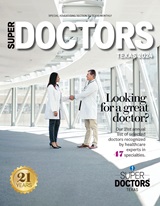Brigham and Women's Hospital (
BWH)
September 22, 2014
Up to 40 percent of patients undergoing breast cancer surgery require additional operations because surgeons may fail to remove all the cancerous tissue in the initial operation. However, researchers at Brigham and Women's Hospital (BWH) have successfully tested a tool they developed that will help surgeons better distinguish cancerous breast tissue from normal tissue, thereby decreasing the chances for repeat operations.
The study is published online the week of September 22, 2014 in the Proceedings of the National Academy of Sciences.
The tool, known as DESI mass spectrometry imaging (or Desorption ElectroSpray Ionization mass spectrometry imaging), works by turning molecules into electrically charged versions of themselves, called ions, so that they can be identified by their mass. By analyzing the mass of the ions, the contents of a tissue sample can then be identified. The tool sprays a microscopic stream of charged solvent onto the tissue surface to gather information about its molecular makeup and produces a color-coded image revealing the nature and concentration of tumor cells.
In this particular case, the researchers used DESI mass spectrometry imaging to look at the distribution and amounts of fatty acid substances, called lipids, within breast tissue and normal tissue from 61 samples obtained from 14 breast cancer patients that underwent mastectomy. A software program was used to characterize the breast cancer tumors and detect boundaries between healthy and cancerous tissue.
The researchers found that several fatty acids, such as oleic acid, were more abundant in breast cancer tissue compared to normal tissue. The results were also confirmed using traditional pathology methods to test for accuracy.
"Our findings demonstrate the feasibility of classifying cancerous and normal breast tissues using DESI mass spectrometry imaging," said Nathalie Agar, PhD, director of the Surgical Molecular Imaging Laboratory, BWH Departments of Neurosurgery and Radiology, senior study author. "The results may help us to move forward in improving this method so that surgeons can use it to rapidly detect residual cancer tissue during breast cancer surgery, hopefully decreasing the need for multiple operations."
Agar, who also is affiliated with the Department of Cancer Biology at Dana-Farber Cancer Institute, notes that the researchers plan to continue to work toward validating the identified biomarkers-the fatty acid substances-to provide tumor margin information during breast cancer surgery. Moreover, BWH plans to use the tool in the near future in its Advanced Multimodality Image Guided Operating (AMIGO) suite, to test its performance in detecting breast cancer margins during patient surgery.
This research was funded by the National Institutes of Health Director's New Innovator Award (1DP2OD007383-01), United States Army Medical Research/CIMIT, and National Center for Image Guided Therapy.

